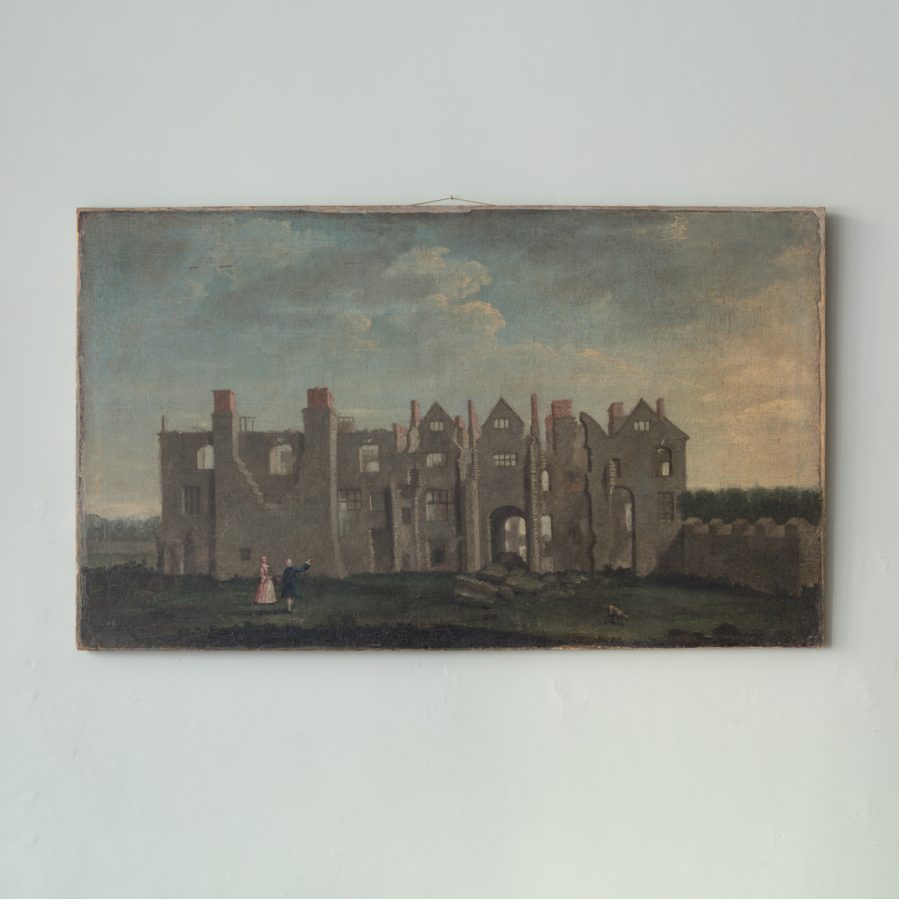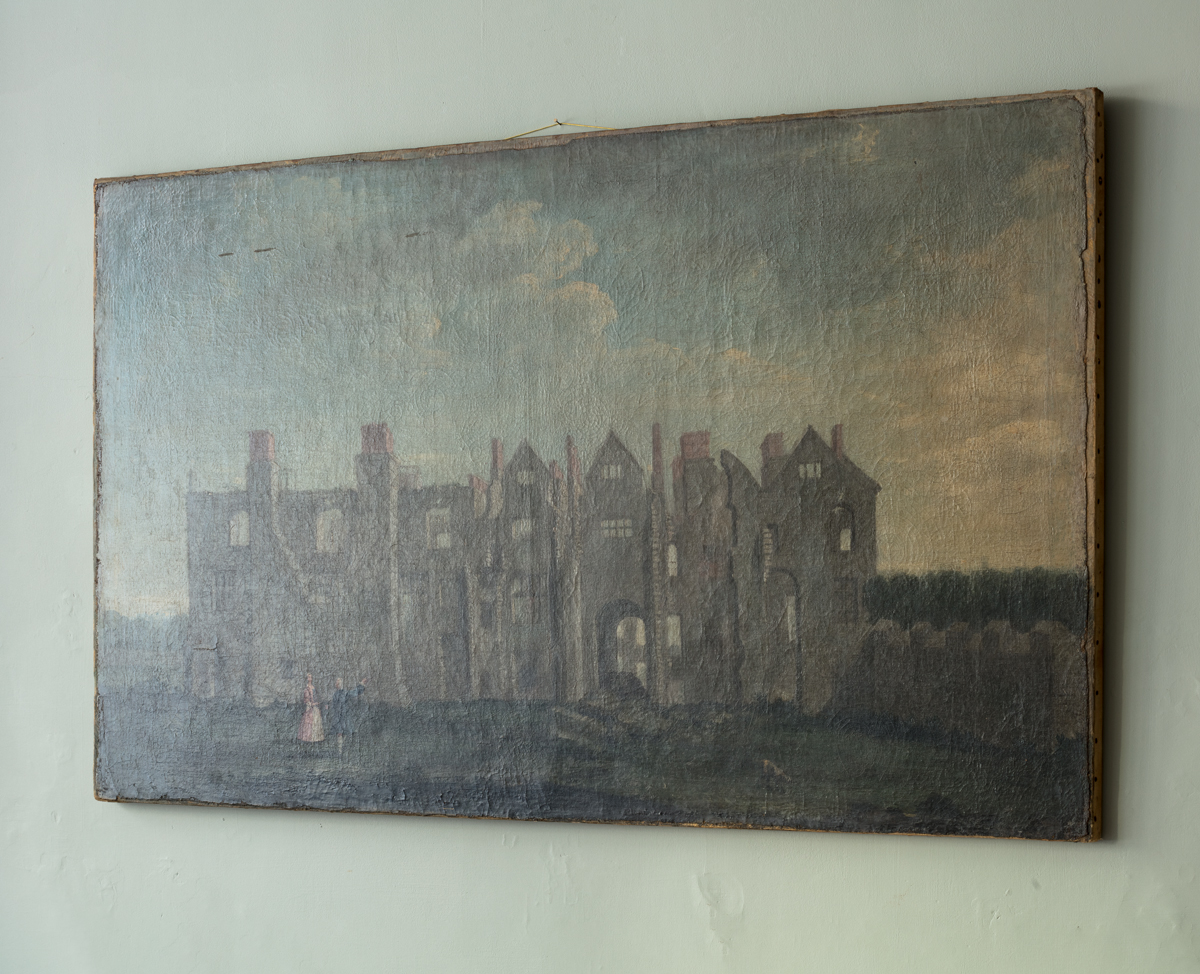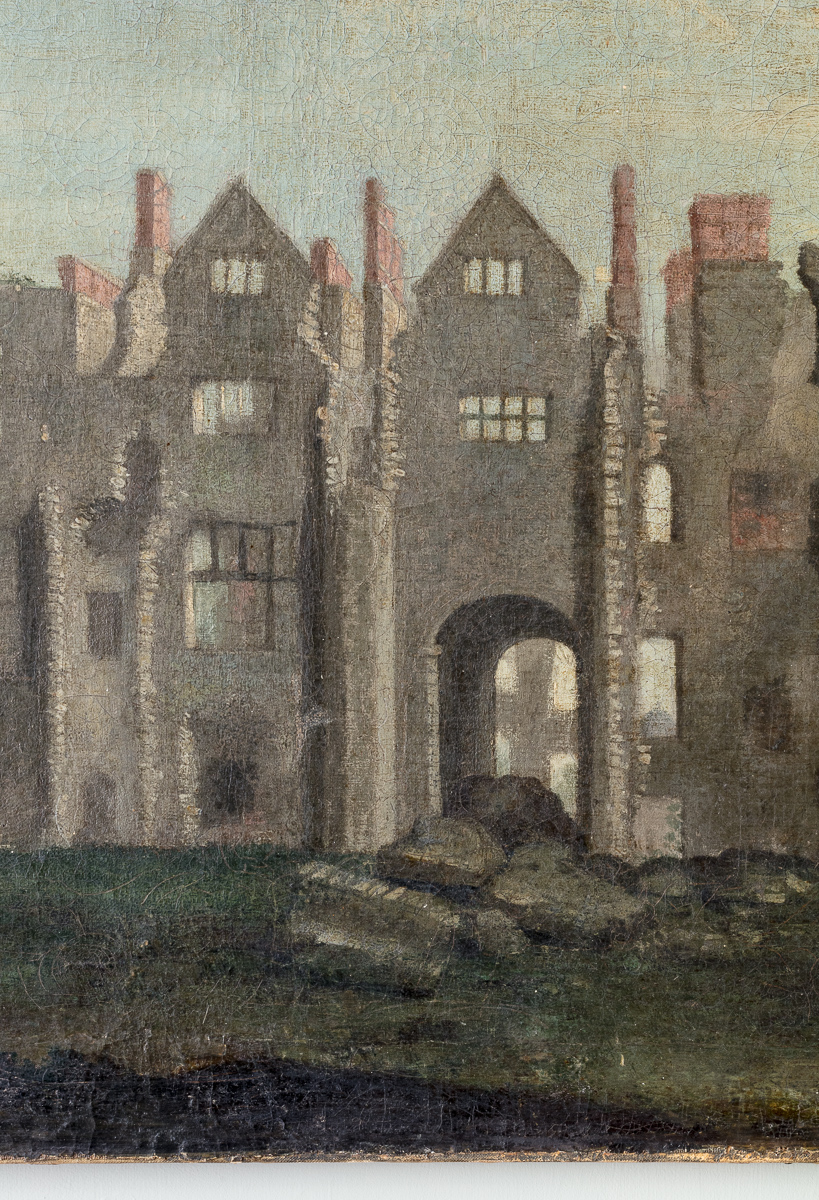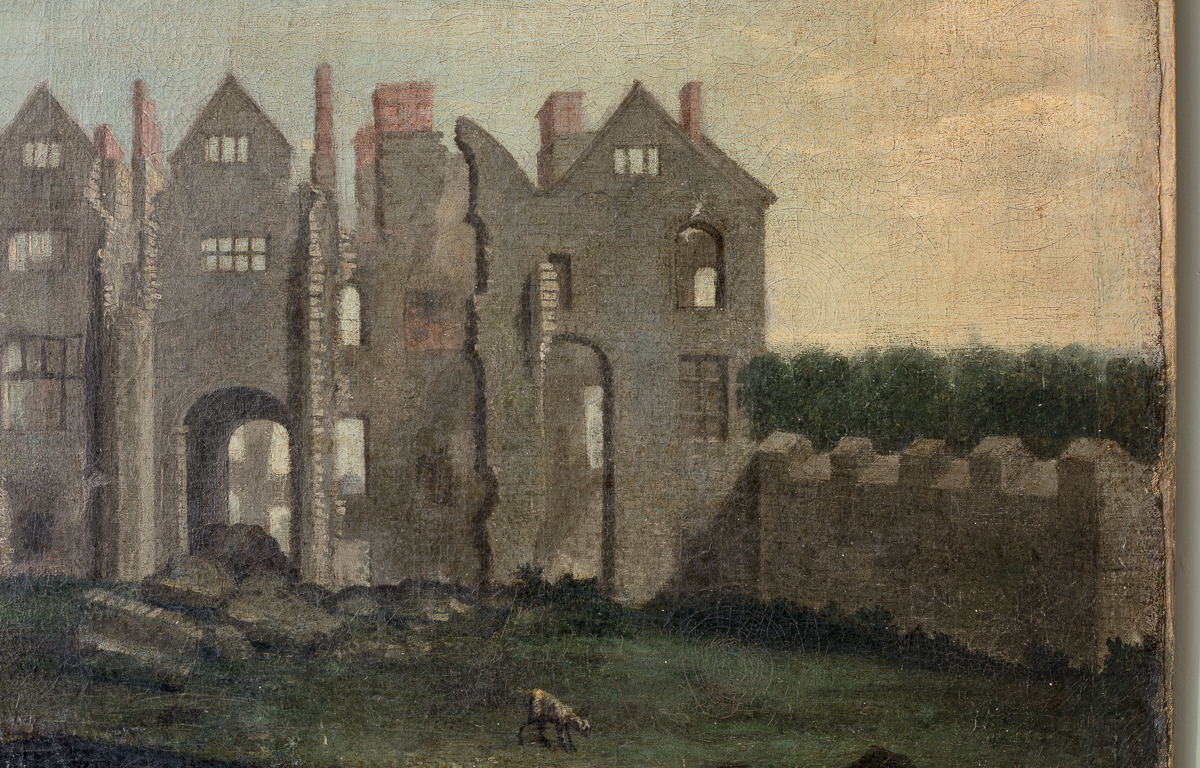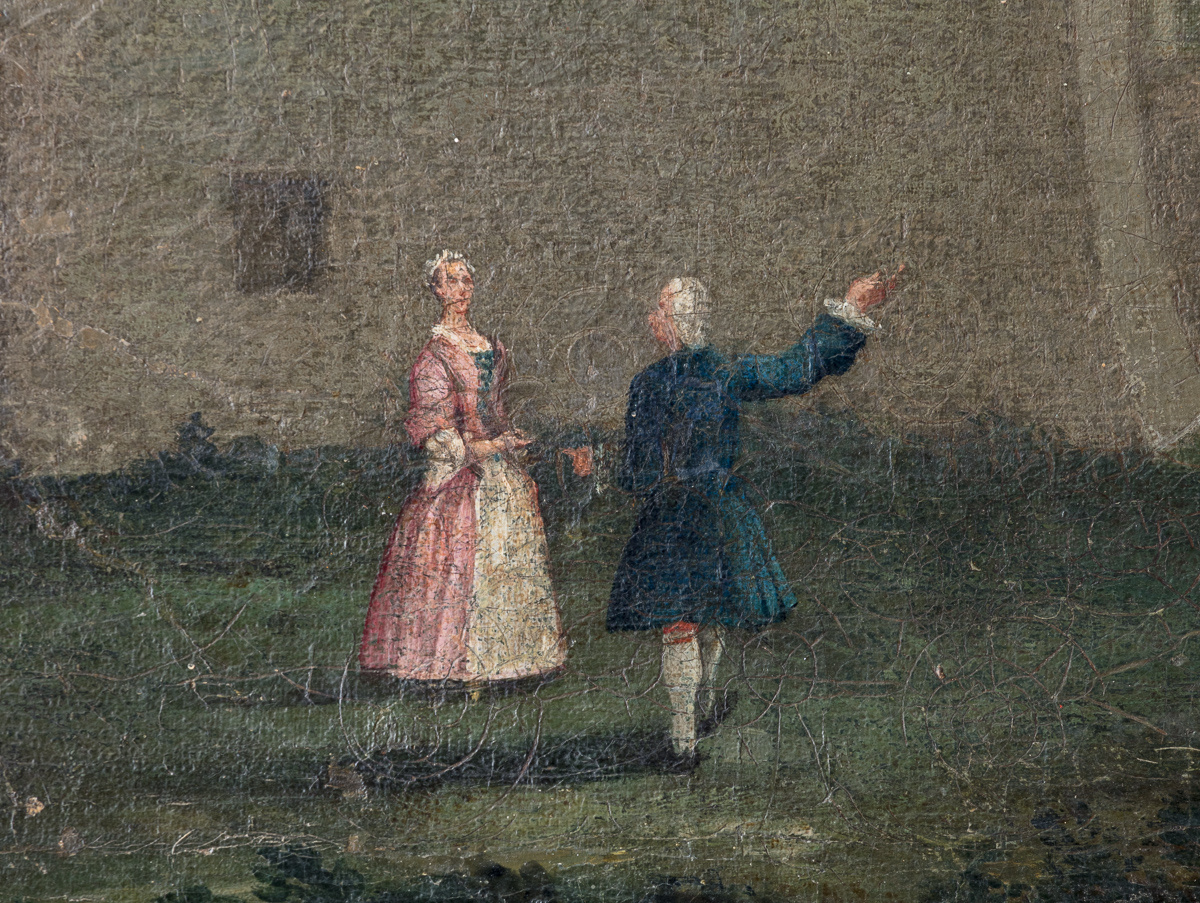The Ruins of Cavendish House, circa 1737, Attributed to Thomas Smith of Derby (flourished 1720 to 1767)
The painting shows the south front of Cavendish House, Leicestershire with the ruined building being admired by visitors (romantically believed to possibly depict the 2nd Duke and Duchess of Devonshire), an early depiction of such Antiquarian interest.
The house was originally built in the late 1500s by the Earls of Huntington reusing stone from the great Augustinian Abbey of St. Mary de Pratis which was dissolved by Henry VIII’s commissioners in 1538. The estate was purchased by William Cavendish, 1st Earl of Devonshire (1552-1626) in 1613.
Cavendish enlarged and improved the house to rival Chatsworth the family’s Derbyshire seat. In due course it became the dower house of the Earl’s daughter-in-law Christian, Countess of Devonshire (1595-1628).
During the Civil War the house was used by Charles I who stayed there during the siege of Leicester and before meeting the Parliamentary forces at Naseby. As a result, following his defeat the house was looted and burnt. The Cavendish family retained the historic ruined house and estate until 1737.
The painting is attributed to Thomas Smith of Derby who also painted a view of Chatsworth (see Collection of the Dukes of Devonshire at Chatsworth House) for William Cavendish 2nd Duke of Devonshire (1698-1755). It has been suggested that this painting of Cavendish House could have been commissioned by the 2nd Duke as a record of the ruined house at the time he sold the estate.
(unframed)
£8,600


